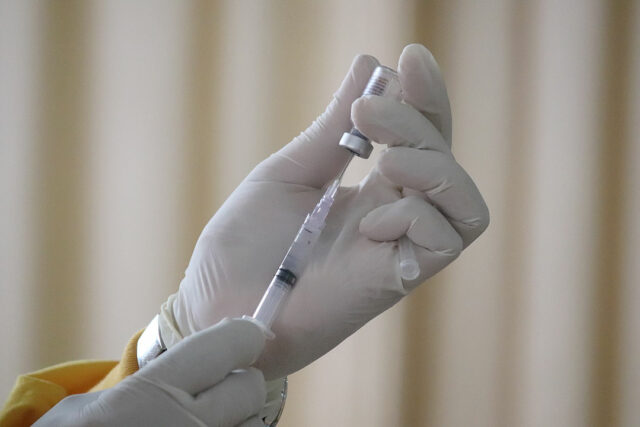Pneumonia vax strategy needs urgent review, say health experts
THE Philippines’ pneumonia vaccine strategy — which uses only one of three of the World Health Organization’s (WHO) vaccines — is outdated and needs to be reviewed, according to medical experts.
“It’s unfortunate that the updating of the [national] formulary isn’t as regular as we want it to be. This is in the hands of the regulatory officers of the Department of Health,” said Dr. Vicente Y. Belizario, Jr., dean of the University of the Philippines College of Public Health (UP-CPH), at a March 23 forum.
He recommended that the formulary be reviewed annually so that new cost-effective products “with more promising results can be considered for inclusion.”
The United Nations children’s agency UNICEF said in 2019 that a child dies of pneumonia every 39 seconds, making it one of the leading killer diseases for children.
In the Philippines, pneumonia was found to be the seventh top cause of death in the country, accounting for 4.3% of total deaths from January to November 2021.
“A strong immunization system is paramount for prevention. There’s always new evidence coming out and we need to keep our doors open as the latest one may be the key to update our healthcare policies,” said Dr. Belizario.
The only pneumococcal conjugate vaccine (PCV) being used in the Philippines’ national immunization program (NIP) is PCV13, which was recommended by the Formulary Executive Council in 2014 based on locally relevant serotypes.
UP-CPH reiterated that “a reassessment of PCV use in the country with the inclusion of all three pneumonia vaccine formulations may be warranted.”
Though vaccines for invasive pneumococcal disease (IPD) caused by Streptococcus pneumoniae in infants and children from six weeks up to two years of age have been available since 2009, pneumococcal pneumonia remains to be the number one cause of death in infants and young children under five, it said in a statement.
The local program lacks two vaccines — PHiD-CV and SIIL-PCV — that can provide direct protection to serotypes or variations of the Streptococcus pneumoniae bacteria.
Two years ago, PHiD-CV was recommended to the DoH by the Health Technology Assessment Council, according to Dr. Maria Margarita M. Lota, UP-CPH medical microbiology professor and research project leader.
“Knowing all the evidence for the three PCVs, we can see that they are comparable. This means that we can now include these three choices so we can have greater access and availability for the NIP as well as for the private sector,” Dr. Lota said.
She emphasized that the WHO declared these vaccine formulations to be at par with — and not inferior to — each other.
CHANGING EPIDEMIOLOGY
According to WHO, evidence suggests that there has been a substantial change in the epidemiology of pneumococcal disease, which warrants review of the choice of vaccine and consideration of ones that offer direct protection against the prevailing serotypes.
“There’s a need to enhance surveillance methodology, which will assist with choice of our PCV since they all vary in their protection against serotypes,” she said.
Because epidemiology is always changing, surveillance is crucial, agreed Dr. Maria Rosario Z. Capeding, pediatrician and infectious disease specialist at the Asian Hospital and Medical Center.
“Remember that [with] each serotype, the predominance varies from individuals to countries, which is why we call it a changing epidemiology of serotypes,” she said.
Her epidemiological research showed that 100 serotypes of the bacteria that cause pneumococcal pneumonia have been identified in 2020.
UP-CPH also cited “potential savings from using a new and possibly more cost-effective formulation, the cost of averting resistant serotypes, and the availability of a new PCV with a different but comparable serotype coverage and lowest vaccine price.”
“Prevention tops everything else. If you prevent disease, you will prevent our healthcare system from being overwhelmed,” said Dr. Lulu Bravo, executive director of the Philippine Foundation for Vaccination and convenor of the Vaccine Solidarity Movement. — Brontë H. Lacsamana














